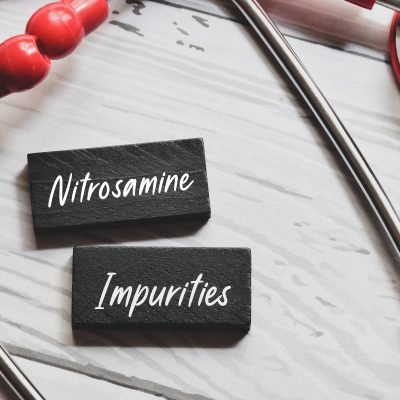Nitrosamine Impurities – Clearing up the Obscurities
Nitrosamine Impurities – The Basics
Nitrosamines (also referred to as N-nitrosamines) are compounds that contain a nitroso group bonded to an amine group. They are typically formed through a condensation reaction between an amine and nitrous acid.
We have known about the existence of nitrosamine impurities for quite some time as they are commonly found in the water and the foods that we consume everyday. Animal studies have demonstrated that some nitrosamine impurities are carcinogenic, and the ICH has grouped nitrosamines – particularly NDMA and NDEA – in their “cohort of concern” which is comprised of highly potent mutagenic carcinogens. Other nitrosamines have also been considered to have similar toxicological profiles to NDMA and NDEA, and are therefore classed as probable human carcinogens.
Drug manufacturers, toxicologists, and regulatory agencies have known of the potential harm of nitrosamines for decades; however, special attention and increased regulatory oversight has been implemented starting with the discovery of these impurities in valsartan in 2018. The recent increased surveillance of drug purity by regulators and the requirement for sponsors to develop improved analytical testing methods unveiled a new obstacle for the pharmaceutical world to tackle.
2018 – A Turning Point
Valsartan is part of a class of drugs known as angiotensin II receptor blockers (ARBs), predominantly used to control high blood pressure. Since the discovery of nitrosamines in valsartan in 2018, thousands of lots of other drugs have been found to contain unacceptable levels of nitrosamines, and hence, have been recalled. These drug products include: ranitidine/nizatidine (antacids), rifampin/rifapentine (antibiotics) and metformin (hyperglycemic drug).
The amount of nitrosamines discovered in these drugs varied widely, with some drugs having multiple different nitrosamines. The presence of these impurities was unexpected, and as such, regulators had to act quickly to address the issue at hand.
What do you do as a manufacturer?
Nitrosamine impurities have become a hot topic globally among regulators, all with a common goal of decreasing the risk of exposure to the consumer. Agencies such as the FDA, Health Canada, and EMA have all released guidances for industry, however, most of these guidances touch upon the same key points.
As an API or drug product manufacturer, your first step is to identify all the ways in which nitrosamine impurities may appear in your final drug product. This includes, but is not limited to:
- Conditions that lead to nitrosamine formation such as the presence of amines and nitrile salts in acidic conditions.
- The presence of amine functional groups in either the API (particularly secondary amines), reagents, solvents, or catalysts which can react with nitrous acid/nitrosating agents.
- Contaminated raw materials or process equipment.
- Contaminated recovered or recycled materials; residual amines in recovered solvents, catalysts, or reagents.
- Poorly controlled or poorly optimized manufacturing conditions (e.g., temperature, pH, manufacturing sequence).
- Nitrite impurities in excipients.
Health Canada, the FDA, and the EMA have released guidance to help manufacturers of chemically synthesized APIs and drug products. The agencies agree that the following three steps are pertinent for API and drug product manufacturers in mitigating the risk of nitrosamine impurities.
- Risk assessment: Conduct a risk assessment using ICH Q9 principles to determine the potential for nitrosamine impurities in drug products. If there is a risk of nitrosamine formation, sponsors should consider the daily dose of the drug product, duration of treatment, route of administration and patient population.
- Confirmatory testing: If there is any risk for the presence of nitrosamines, confirmatory testing should be conducted using validated, specific, and sensitive analytical methods at a GMP compliant facility.
- Communicate with the agency: If nitrosamines are detected in the API or drug product (irrespective of amount), the appropriate regulatory agency should be notified. Any changes implemented to prevent or reduce nitrosamine impurities should also be reported.
- Additional nonclinical mutagenicity testing, particularly for API-related nitrosamines for which the mutagenicity may be unknown.
In short, manufacturers should continuously review their processes, materials, and products to evaluate the potential presence of nitrosamine compounds and take steps to ensure that any nitrosamine impurities that are present do not exceed the acceptable limits as defined by the agencies.
How can Intrinsik help?
Intrinsik’s nonclinical team is equipped with the knowledge and expertise to conduct nitrosamine impurity assessments, and qualification of API-related nitrosamines and impacted drug products. We use ICH and regulatory agency recommended approaches in conjunction with our knowledge of nitrosamine toxicology and successful experiences using state-of-the-science mutagenicity testing. Our regulatory team can assess the regulatory impact of nitrosamine risk assessments and support any subsequent required filings.
For more information on how Intrinsik can help your company, please contact .
Intrinsik Blogger:
Mahshad Farmanbar

